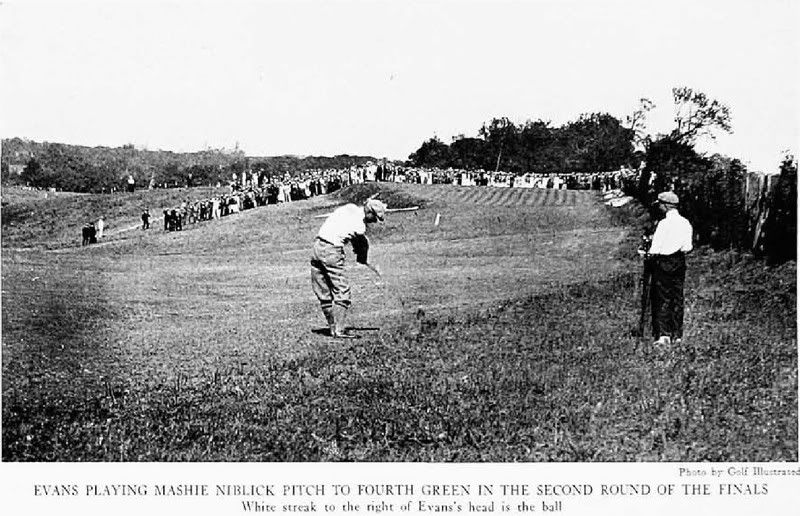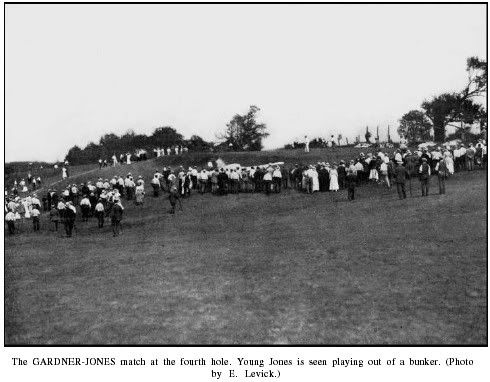What I find so interesting about Merion as an Open venue is that it was most definitely designed to be a strategic course where the line off of the tee very much mattered, because it determined the difficulty of the next shot. But this sort of strategic design generally depends upon wide fairways. I am interested whether any of this type of horizontal strategy still exists at Merion, or whether it has been negated by narrower fairways and tree growth.
Does the course as is present the types of horizontal strategic choices off the tee as was originally intended? Perhaps those familiar with the course can fill me in.
There are many potential examples of how width and horizontal strategy came into play initially. Here are just a few:
No. 6. The sixth was designed to play with "a road hole" strategy, where the golfer faced an option off the tee of playing directly over the O.B (at one point a corn field) which jutted into the course right in front of the tee, and along the out of bounds right. This was to have left the golfer with a preferred angle and shorter shot to the plateau green, while avoiding the nasty bunker at the left front corner of the green. The safer route was out to the left but this left a longer shot to a difficult to hold plateau green and no way to run it up because of the left fronting pit.
While according to JES this hole still requires a three wood or driver, does the line of the drive ever even into the equation, or is the goal simply to hit the fairway? Does anyone even consider the O.B. anymore, or is it too far out of play to worry about?
No. 7. While never a long hole, the seventh was nonetheless an interesting hole using the slope of the ground and the out of bounds to create a natural "bottleneck" as one approached the green, which because of the shape and contours was easiest to hit and hold from alongside the out of bounds right. As one approached the green this area became narrower and narrower. Golfers who unsuccessfully tried to go too far up into this natural bottle neck saw there balls either out of bounds or rejected down the slope to the left, thus leaving a very difficult and unforgiving angle into the green.
Now there are trees along the out of bounds line to the right, but would the hole be more interesting for pros and amateurs alike if one could hug the right side O.B. for a better angle in? Would it even matter? What if the green was rock hard, so that it was difficult to hold a ball from well below the hole on the left?
A shot of Chick Evans, near the property line, 1916.

Bobby Jones, as a teenager, 1916, caught in the greenside bunker on his second.

And one of Bobby Jones, circa 1930.

No. 14. The horizontal strategy on this hole was somewhat dictated by the out-of-bounds and by the orientation of the "double plateau" green. As can be seen in the linked photo below (from the Hagley library collection) the 14th fairway used to extend all the way to the Golf House Rd., thus giving the golfer an opportunity of hugging the out of bounds left and setting up a shorter and approach and avoiding having to carry the bunker at the short right of the green. Also the golfer could play for position depending upon the pin location and orientation of the plateaus.
Are there any horizontal choices off the tee, or is it more a matter of just trying to hit the fairway? Were the tees to remain as they are, would any of the professionals hit driver? If they could cut the corner toward the left bunker, would they?
